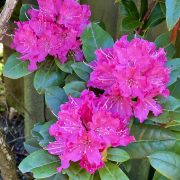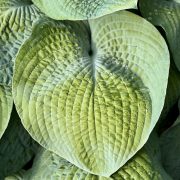Deer enjoy some of the ornamental plants we grow in our gardens as much as we do, so if you are designing a garden in an area where deer are present, there are some key factors to consider.

Deer populations are thriving in the Puget Sound region. You’ll find them in the wooded suburban areas where they enjoy an abundance of food and have no natural predators. Some people think deer are adorable and others find them a nuisance, but what we can agree on is that they won’t be going away any time soon.
By planning ahead and making intelligent choices, you can minimize the effects of deer on your garden.
I won’t go into detail about deterrents, but you can search online for “deer-proof” and “deer-resistant” plants, as well as deer-fencing or other solutions. There has been much research done and there is an abundance of good material that can be found online or in books. Look at several sources, as recommendations vary.
For a less aggressive approach, here are my own top tips for creating a garden that can survive contact with our local deer:
- Try planting in masses. This decreases the chances that all of one variety will be eaten at one time.
- If you crave summer color, try vigorous, fast-growing perennials that can tolerate or benefit from being cut back midseason. Deer nibbling may act as “trimming” and plants may grow in fuller and stronger than before. This was the case in a client’s yard in Port Townsend, WA—a place know for its robust deer population. We were able to successfully grow Rudbeckia fulgida (black-eyed susan).
- Plant many different species of plants and repeat throughout the garden. Deer may sample (as if at a smorgasbord), but get distracted and move on rather than consuming all of one single plant (no doubt one of your favorites).
A new garden is fascinating place for curious deer and they may be fickle and erratic. Deer may nibble on new plants once and then leave them alone. They may pass up a plant that they’ve eaten in the past.
However, keep in mind that there are some plants that are very likely to attract deer. For instance, a lush-looking bed of hosta can quickly turn into a salad bar. And a plump lily bud (just ready to pop into bloom) might just be a sweet treat for dessert.
Some trial and error is involved and it’s not a perfect science. If you absolutely don’t want to experiment with plantings, you still have plenty of options. Some deer-resistant design options include a rock garden, a dry riverbed, stepable ground covers and dwarf conifers.
I am experimenting with a number of strategies to keep ahead of the deer. One of these is containing a garden within a border of barberry and then planting a favorite food of deer, like lillies, on the outside. The idea is that the deer will be satisfied with the hosta and won’t want to push through the barberry perimeter to get to the main garden. I’ll keep you posted on how this turns out—and I’d love to hear about your experiences with deer.
Need some help with garden design? Contact me to begin your plan for summer and year round.



























